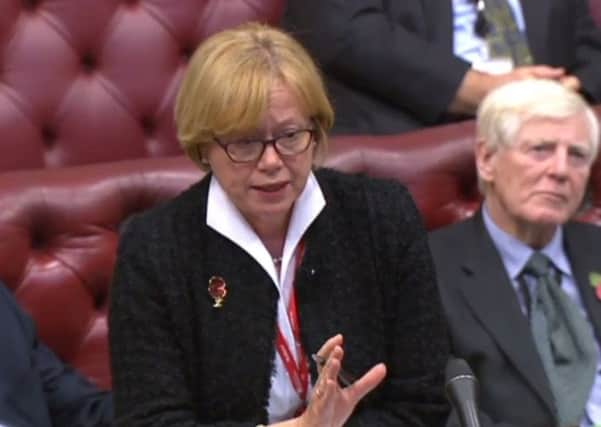Ambulance wait for injured Bognor FC player raised in House of Lords


During a 2-2 home draw with Gloucester in late September, James Crane was injured after an awkward fall.
The defender ended up being helped into a car and driven to Chichester’s St Richard’s Hospital by his father after the club called six times over the course of an hour and a half’ and were told no ambulance was available.
Advertisement
Hide AdAdvertisement
Hide AdBaroness Smith, Labour’s Shadow Leader of the House of Lords, raised recent problems with South East Coast Ambulance Service today (Wednesday November 1) and described how the injured player was in ‘considerable pain’.
She said: “This is not an isolated incident. This service is in special measures.
“A recent report exposed a toxic atmosphere, a culture of bullying, and fear of speaking out.
“CQC confirmed services are inadequate, another noble lord quotes figures at me. The figures I think are really important is the response rate for 999 calls is getting worse, only 50.8 per cent of red one calls and 39 per cent of red two calls. Both life-threatening codes attended within the Government’s eight-minute time limit.
Advertisement
Hide AdAdvertisement
Hide Ad“This is the worst performance ever within the UK since records have been kept.
“Will the Government now accept its responsibilities to the pubic and to National Health Service staff and step in to ensure that both proper funding and decent and effective management?”
In response Lord O’Shaughnessy, the Government’s health spokesman in the Lords, said: “The biggest point I do not disagree with is this is the worst performing ambulance trust in the country whether you look at calls data or performance standards in terms of call outs.
“The question which she quite rightly points out is what you do about it.
Advertisement
Hide AdAdvertisement
Hide Ad“The CQC rated it inadequate about a year ago. They have just followed up, unfortunately it is still inadequate, although some progress has been made they said.
“What is happening is that there has been about half a million pounds of special measure funding gone in, there is a new chair a new CEO in spring this year.
“The local sustainability and transformation partnership have asked the ambulance service for a business case bid for transformation funding.
“So I realise that this is playing catch-up because it is clearly not a good enough level of service.”
Advertisement
Hide AdAdvertisement
Hide AdAfter the incident a spokesman for South East Coast Ambulance Service said the service was ‘extremely sorry for the delay’.
They added: “We have a duty to prioritise immediately life-threatening calls, and while we are working hard to improve response times across our region, there are times when demand for our services means we are unable to reach some patients as quickly as we would like.
“Calls which have been categorised as non-life threatening can have ambulances assigned to them which are then stood down en route to attend more serious calls.”
The national target is 75 per cent for red one calls, which are categorised as immediately life-threatening incidents, within eight minutes.
Advertisement
Hide AdAdvertisement
Hide AdThe drop in performance is due to a higher rate of staff turnover, the need for staff to be abstracted for training, delays at hospitals, and a rise in the percentage of calls received being categorised as red one, according to the NHS trust.